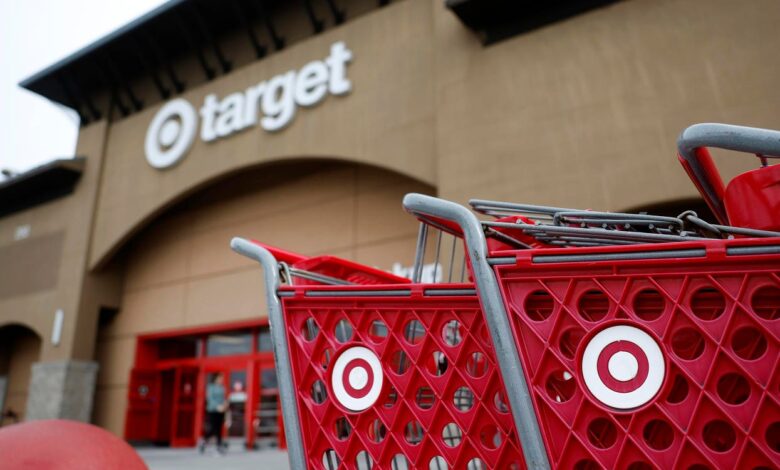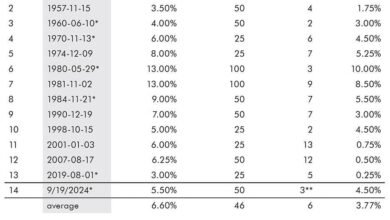Target’s New Fulfillment Strategy Revives In-Store Experience

📝 usncan Note: Target’s New Fulfillment Strategy Revives In-Store Experience
Disclaimer: This content has been prepared based on currently trending topics to increase your awareness.
A view of a Target store in Novato, California. Target is re-engineering the way it deals with online orders vs. in-store experience. (Photo by Justin Sullivan/Getty Images)
Getty Images
For as long as many people can remember, Target successfully targeted the affection of American shoppers, with its clean, bright aisles, well-stocked shelves, and fast checkouts.
Not so much anymore. In an increasingly complex retail environment, the brand fondly known to some as “Tarzhay” is struggling with stagnating sales, plummeting shares, and poor employee reviews.
Widely blamed for the slide: declining customer experience, symbolized by difficulties in juggling “online and in-store businesses with a leaner store staff.”
Now, Target is taking aim at the heart of the problem with an intriguing new initiative designed to restore the in-store experience so many consumers came to love.
Many individual Target stores will stop fulfilling online orders at the store, incoming CEO Michael Fiddelke recently revealed, and send them instead to larger Target locations.
The idea is to relieve often beleaguered store employees who have been racing to fill online orders – contributing to emptying store shelves – and free them up to focus on shoppers actually in the stores.
Target Fulfillment Strategy Focuses on Strengthening In-Store Experience
In a world that has gone largely online, Target’s move is an effort to redefine the often precarious balance that all retailers must seek between digital and in-store customer experience.
The in-store stakes are high: some analysts believe that big box retailers and supermarkets are leaning so far in the direction of online experience that they risk becoming “ghost stores – vast storage facilities that exist only to support e-commerce.”
Target is likely to avoid that fate – because the new fulfillment initiative shows that the chain is leaning back in to its traditional strength: in-store experience.
Like other industries such as restaurants, Target has been trying to maintain the in-person/online balance essentially by appealing to multiple customer groups at once.
But Target is at a disadvantage trying to compete in shipping online orders with Amazon – the behemoth of the trade – and Walmart, which jumped out to a big lead over Target as Amazon’s biggest shipping competitor.
While Target has to stay a player online, the company should emphasize – or re-emphasize – in-person experience because that is its strength, where it can win, where its in-store magic can prevail.
And while some questions remain about the specifics of Target’s new fulfillment initiative, it seems like a smart play for the in-store crowd, as long as the company can execute on it consistently.
Target’s Customer Experience Challenges and How the Brand Is Adapting
It was May 1, 1962, and a big crowd of Twin City patrons lined up outside, eagerly awaiting Target’s first grand opening in Roseville, Minnesota.
The store was an immediate hit, a new idea in retail that combined some of the best department store features – including strong customer experience – with the prices of a discounter. With its iconic red bullseye logo, Target became a destination as much as a shopping experience.
Yet in recent years, the brand has had trouble navigating changes in the American retail environment, including online shopping and the rise of competitors with even lower prices.
A recent companywide survey found that about half of Target employees didn’t think the company was changing fast enough to compete effectively, with about 40 percent saying they lacked confidence in Target’s future.
Even the announcement of company lifer Fiddelke’s ascension to the top job last month was greeted with tumbling stock shares because some investors wanted an outsider.
But one of his first moves was the strategically smart initiative to fulfill more online orders at warehouse locations. To test the changes, Target recently told some Chicago stores to stop fulfilling online orders, and the company plans to expand the program to 30-40 more markets by year’s end.
More than 95 percent of Target’s net sales volume was fulfilled by stores rather than warehouses, as of earlier this year.
Related: Can Target Regain Its Mojo?
Balancing In-Store and Online Experience: Lessons from Target, Walmart, and Taco Bell
Target is not the first brand forced to react to the changing retail environment by trying to appease multiple customer groups at once.
The restaurant industry – where everyone from cashiers to cooks helps shape the guest experience – and in particular fast food establishments have had to adapt to a much larger portion of their business coming from delivery orders. Most are from third party services such as GrubHub, DoorDash, and UberEats.
Taco Bell adapted by developing a Mobile Go restaurant format that features a double drive-thru – one line for traditional orders and the other specifically for mobile – along with other features designed to ease traffic.
The idea is to increase speed for both delivery orders and in-store customers. One reviewer called it “the future of fast food.”
In Target’s own industry, big box retail, Walmart has taken advantage of its vast store network to develop a diversified model that balances digital with in-store experience.
Half of Walmart’s online orders are fulfilled from stores, with the rest coming from Walmart warehouses and seller warehouses. It helps that Walmart is the nation’s biggest player in online grocery – a better fit for stores – and that it has stores within 10 miles of about 90 percent of the U.S. population.
Walmart is also experimenting with so-called “dark stores” – which transform traditional brick-and-mortar locations into “dedicated e-commerce hubs closed to public shopping.” The company says dark stores can process online orders 40 percent faster than traditional store-based operations.
Target’s Fulfillment Changes Make Sense, But Questions Remain
While Target has not explicitly said (and perhaps should say) that its evolving fulfillment strategy is a reaction to the company’s recent problems, it appears to be just that.
And stepping back from in-store fulfillment has the potential to help solve, or at least improve on, some of those issues. The changes could bring employees some relief, with reductions in multitasking between picking up orders and stocking shelves rebuilding employee morale.
We could even see a re-appearance of the beloved Target of old – well-stocked shelves, clean aisles, and smiling employees providing great experiences.
But the long-term benefits hinge on implementation and on resolving some potential issues.
Consolidating fulfillment in fewer, better-equipped stores, for example, may improve order accuracy and speed, but might lengthen fulfillment times if hubs aren’t close enough to a shopper’s area.
Target also could be risking inconsistent experiences between stores with large fulfillment centers and smaller stores without those centers.
And while the new initiative is supposed address out-of-stock situations that frustrate customers, it is unclear if deeper inventory order/fulfillment issues will prevent that – or if President Trump’s tariffs will exacerbate the problem.
Still, Target is taking aim at its biggest problem, and given the declining fortunes of this classic American brand, that alone constitutes a creative step in the right direction.




